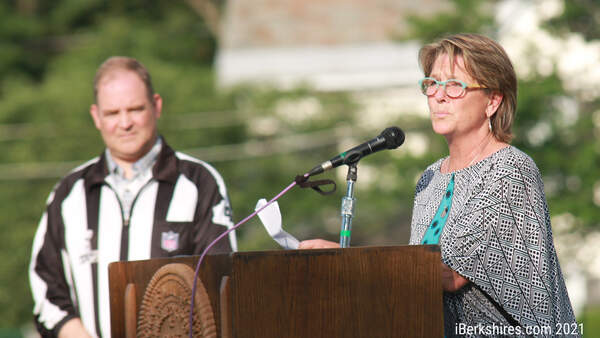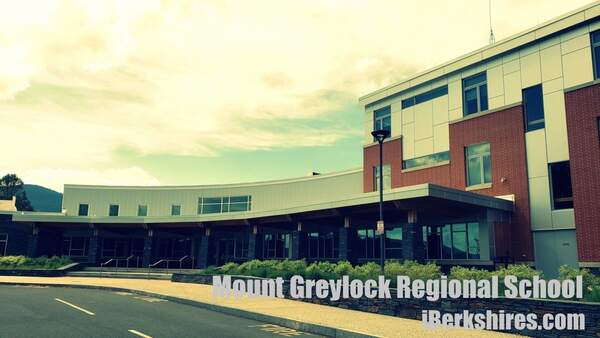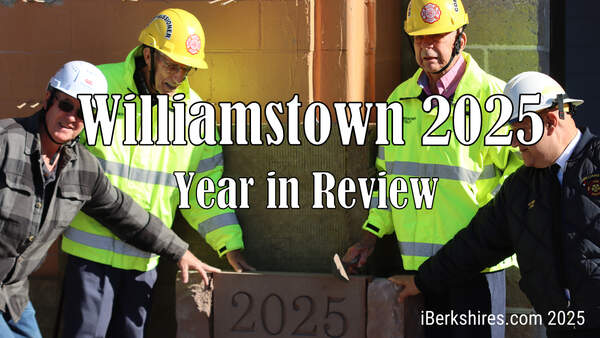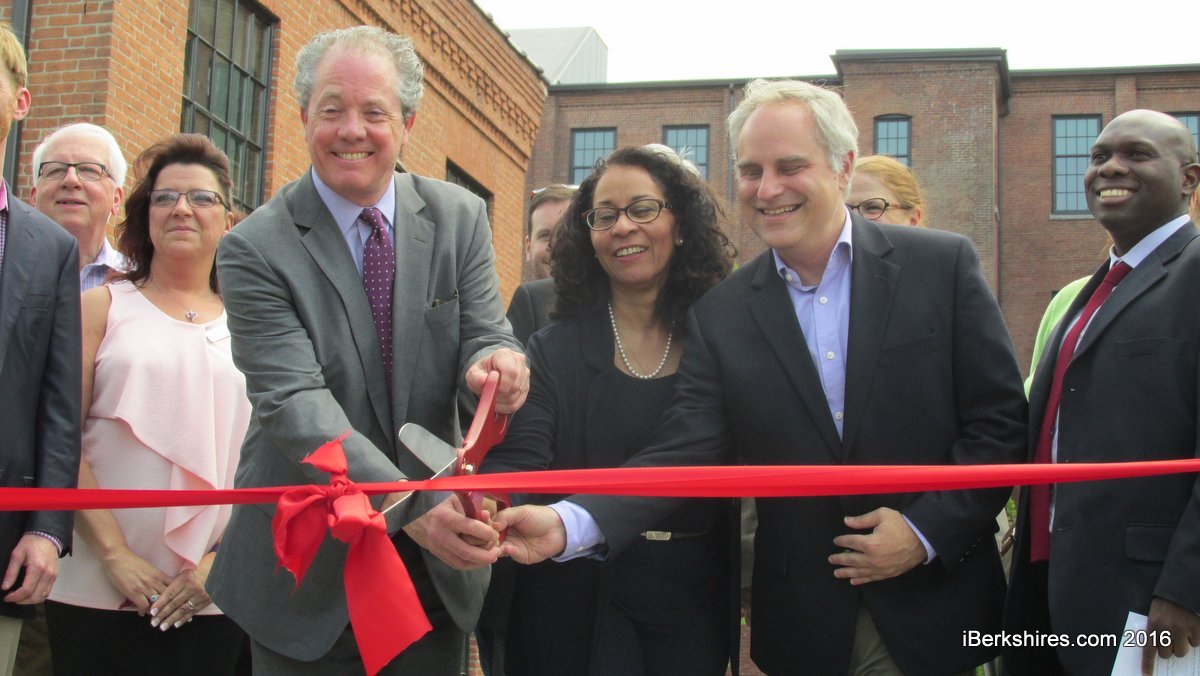
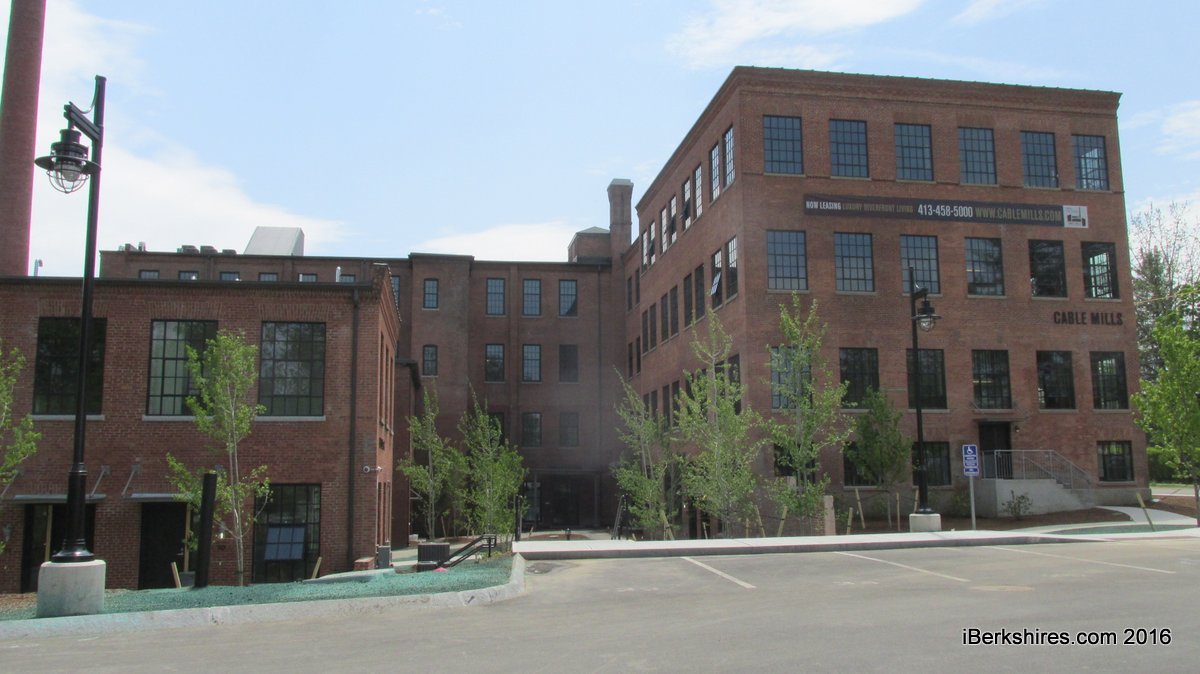
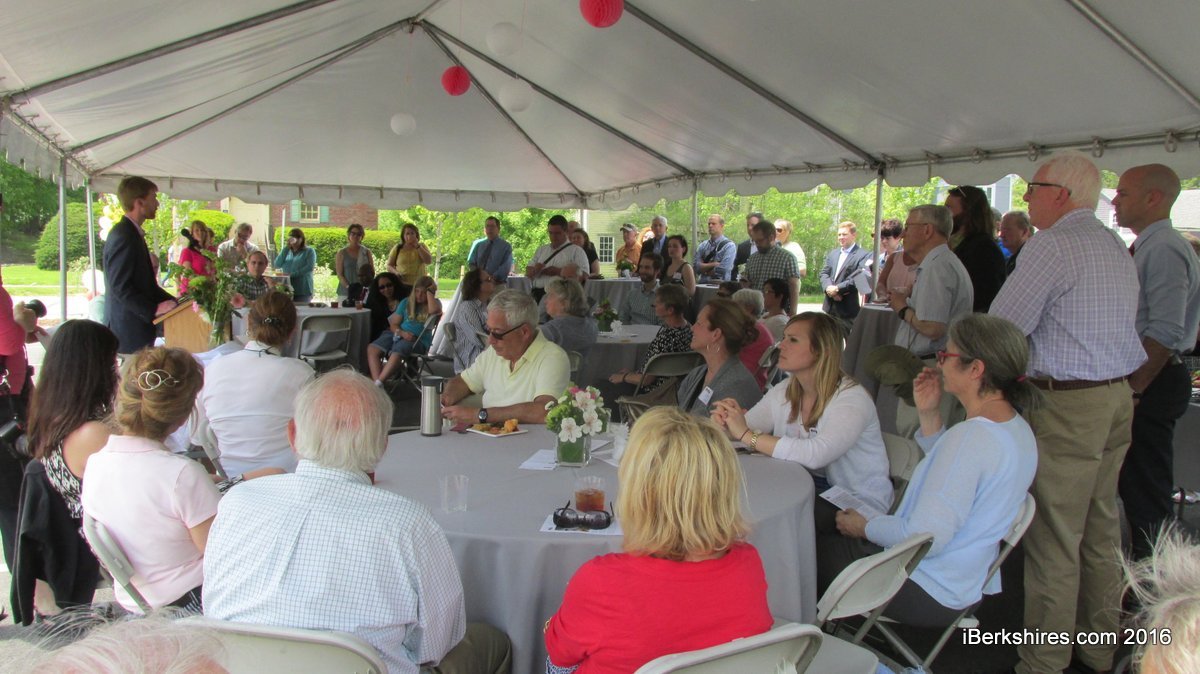
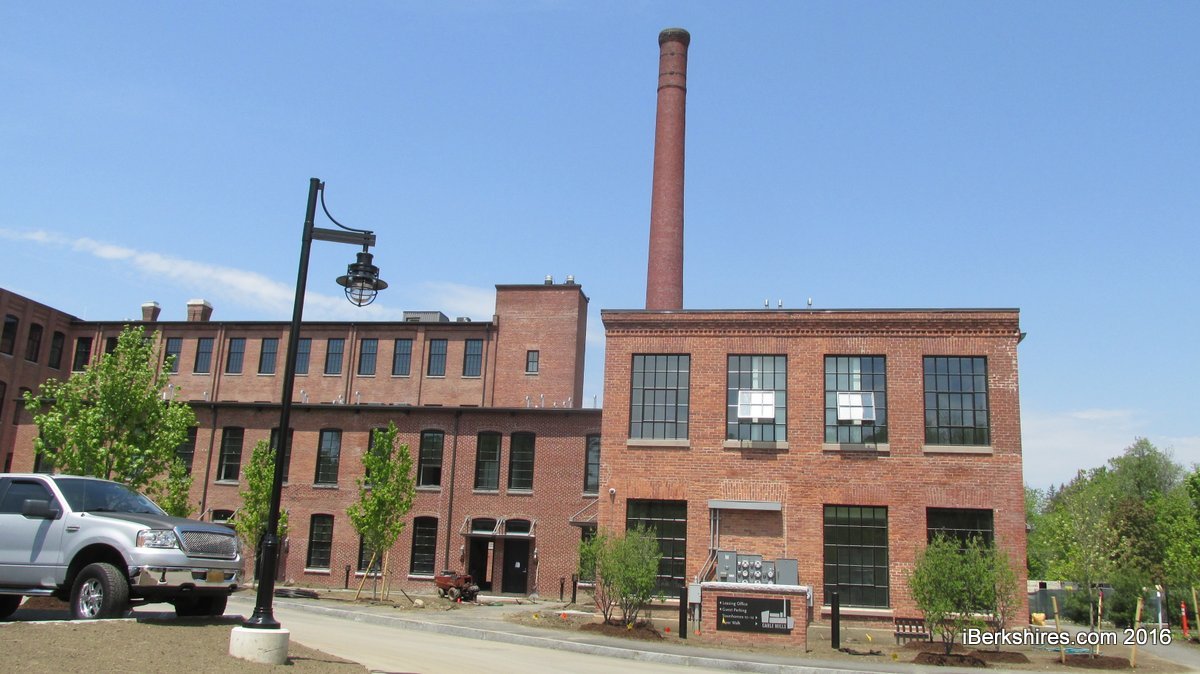

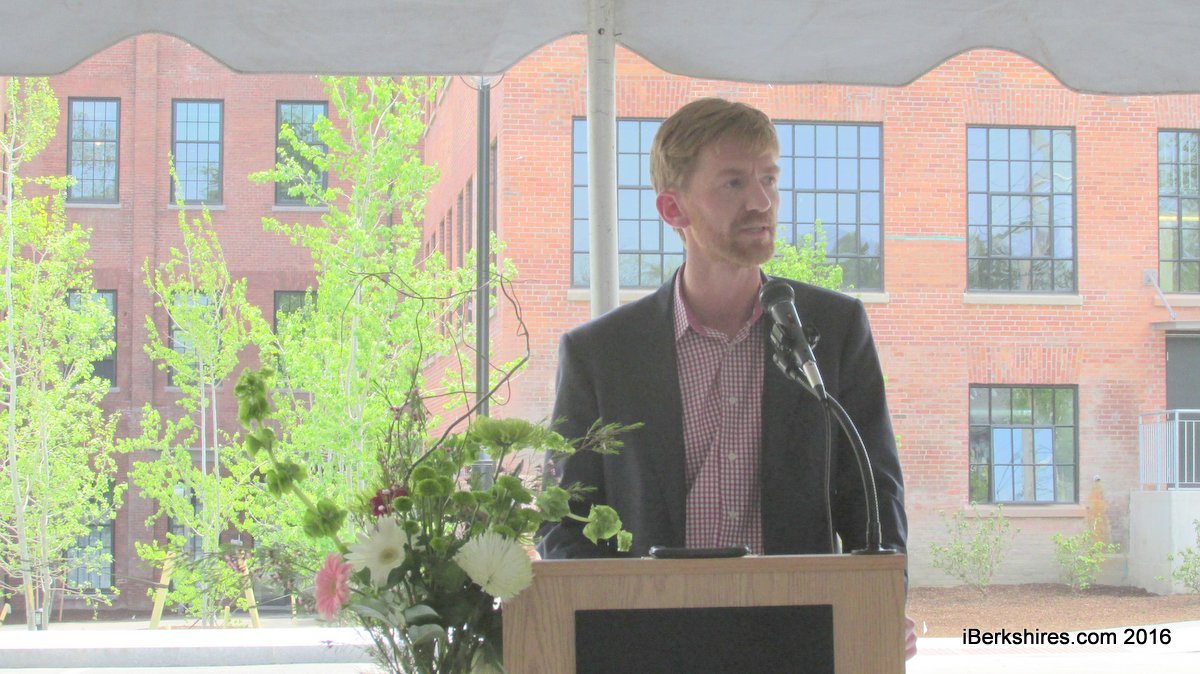
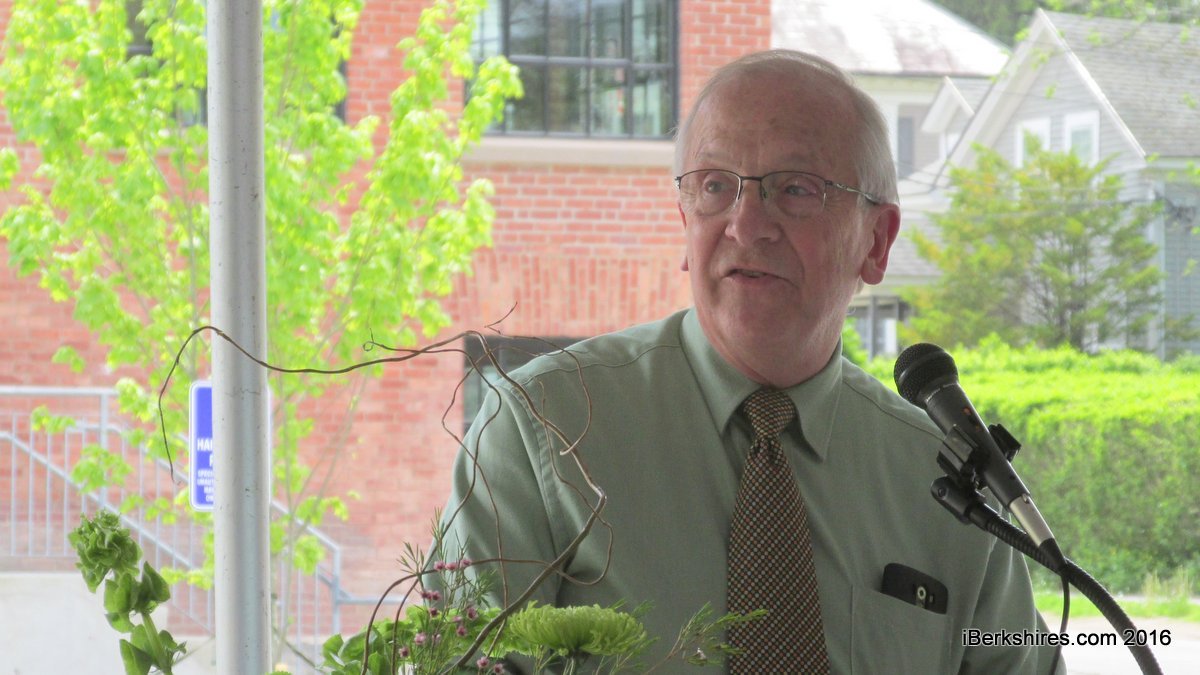
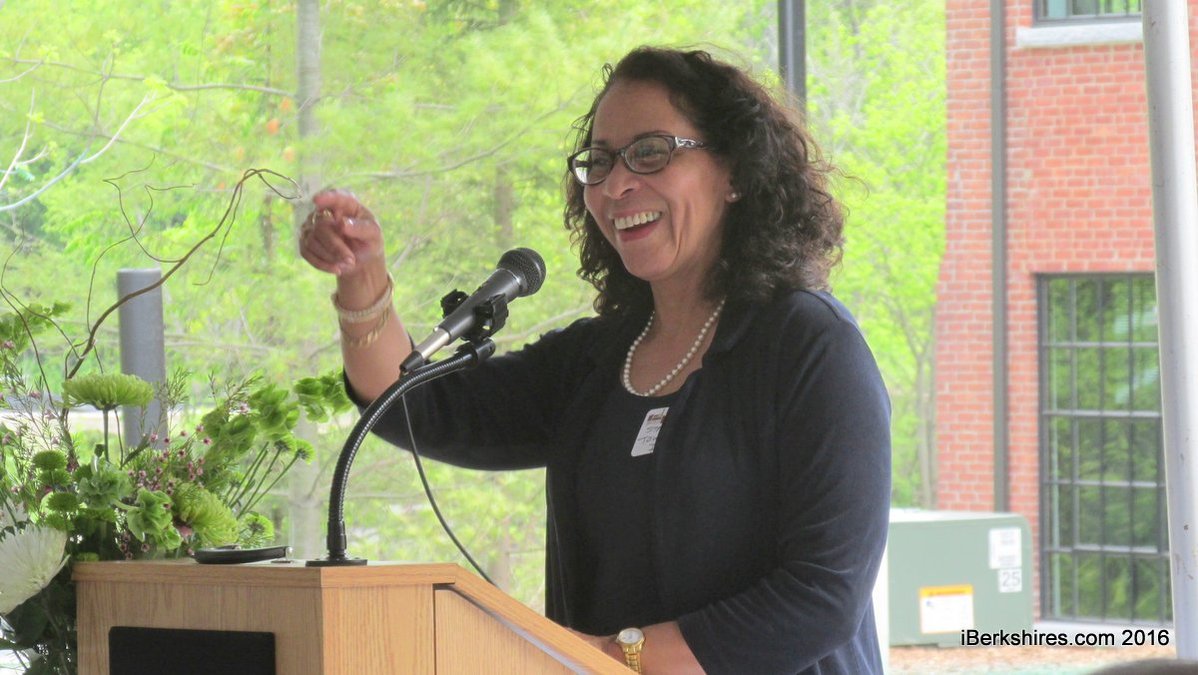
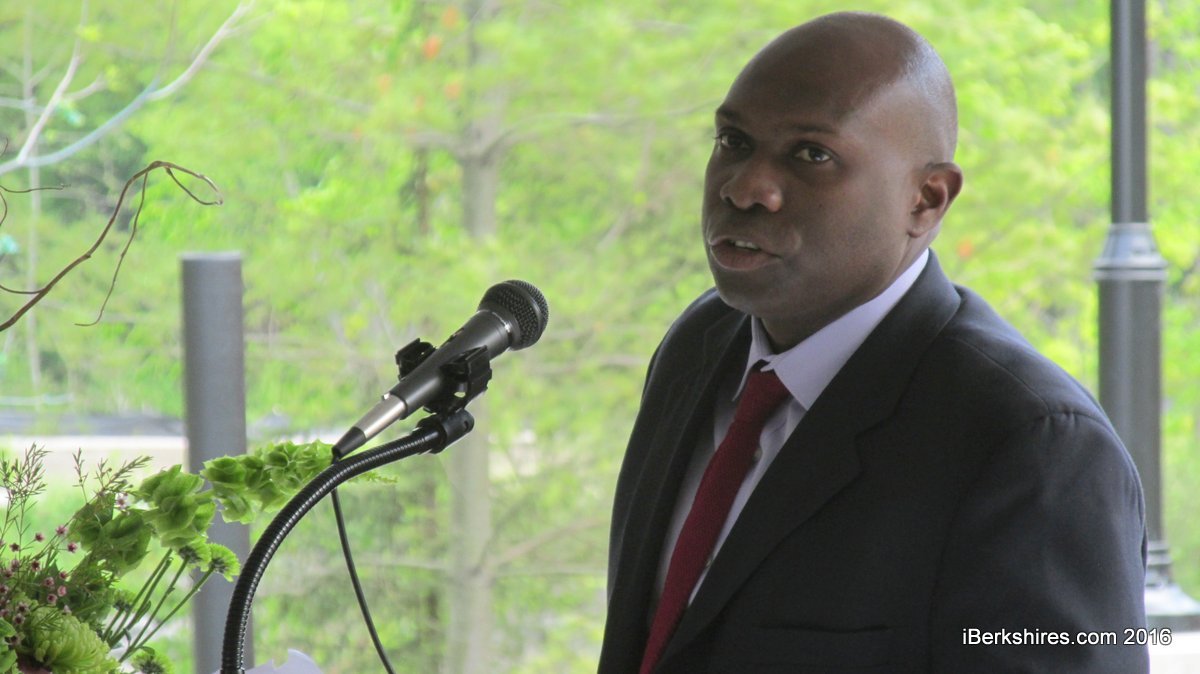
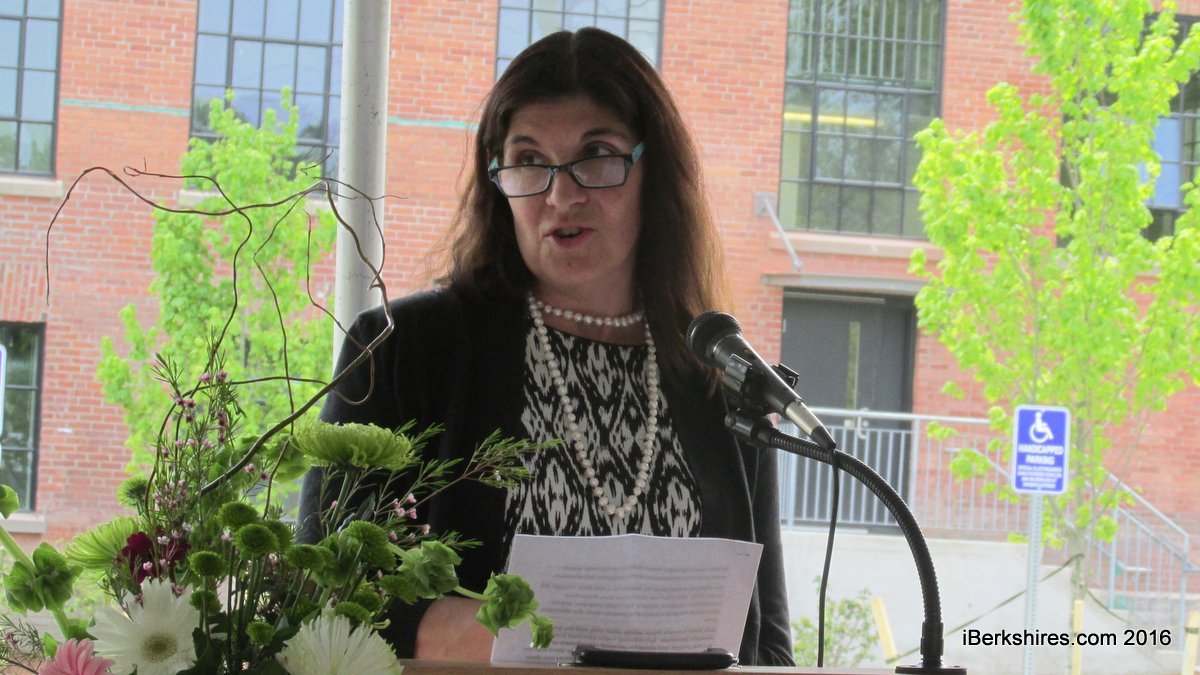
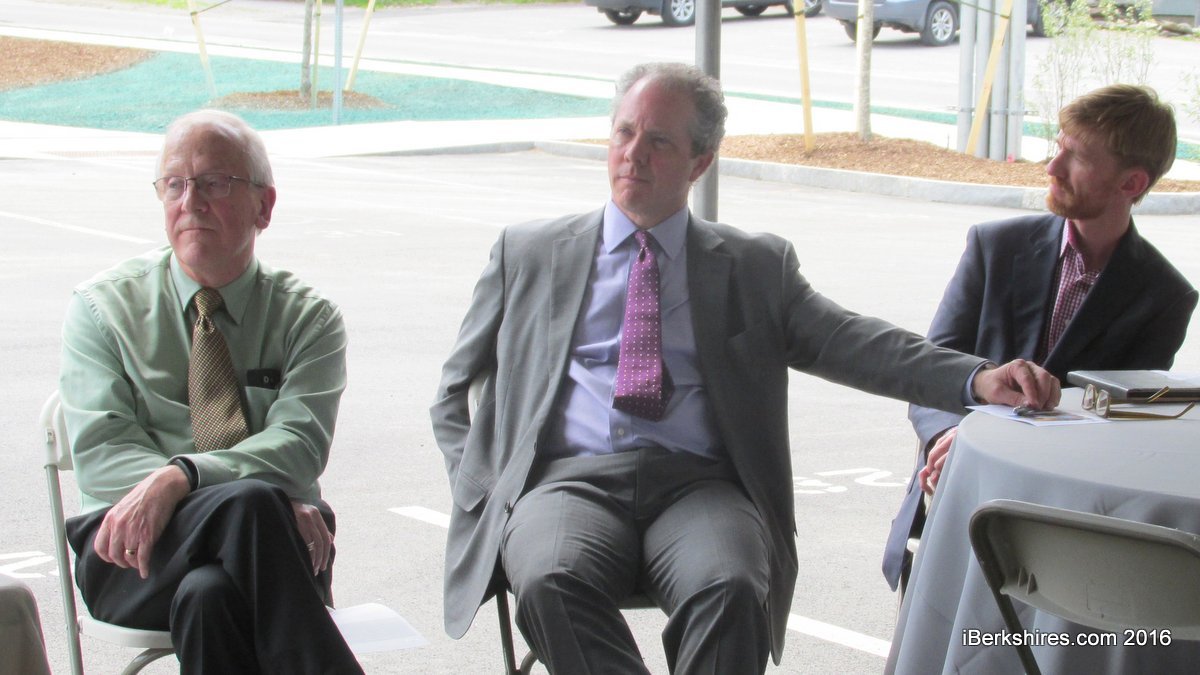
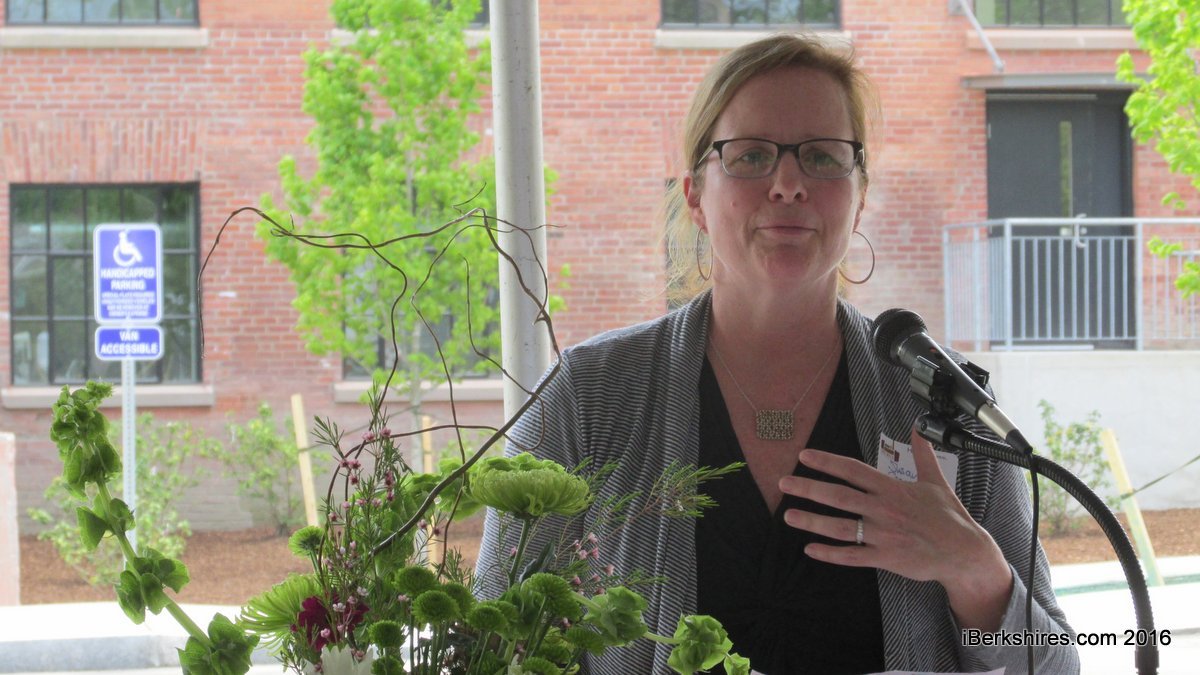
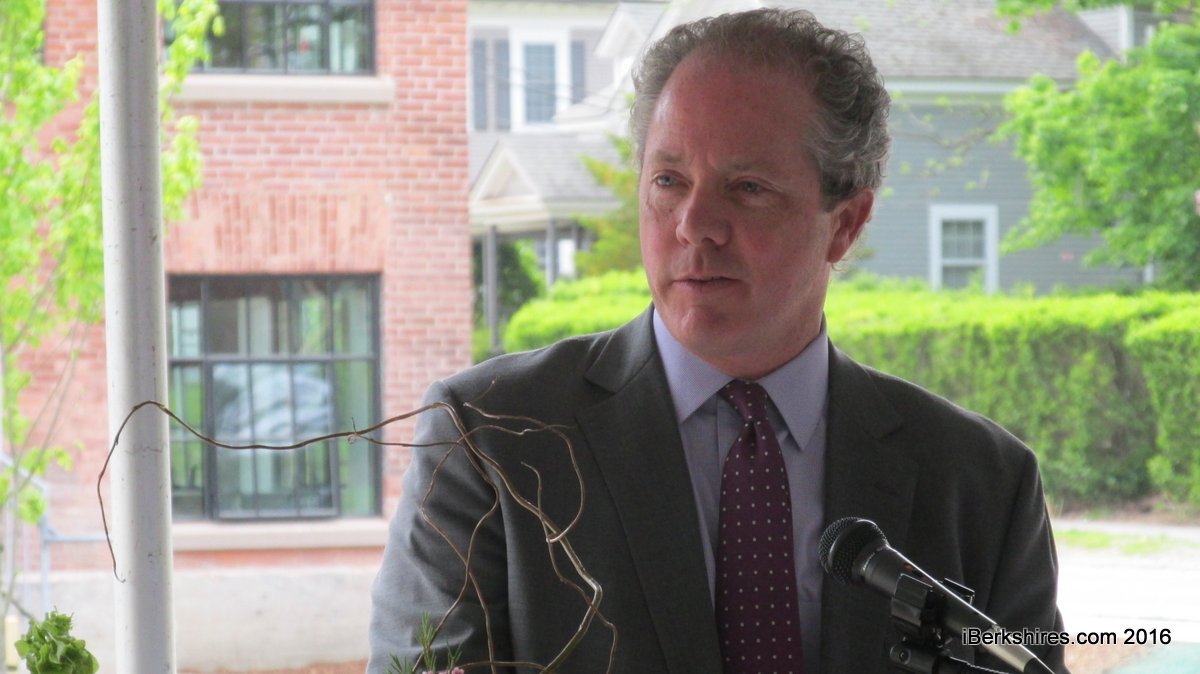
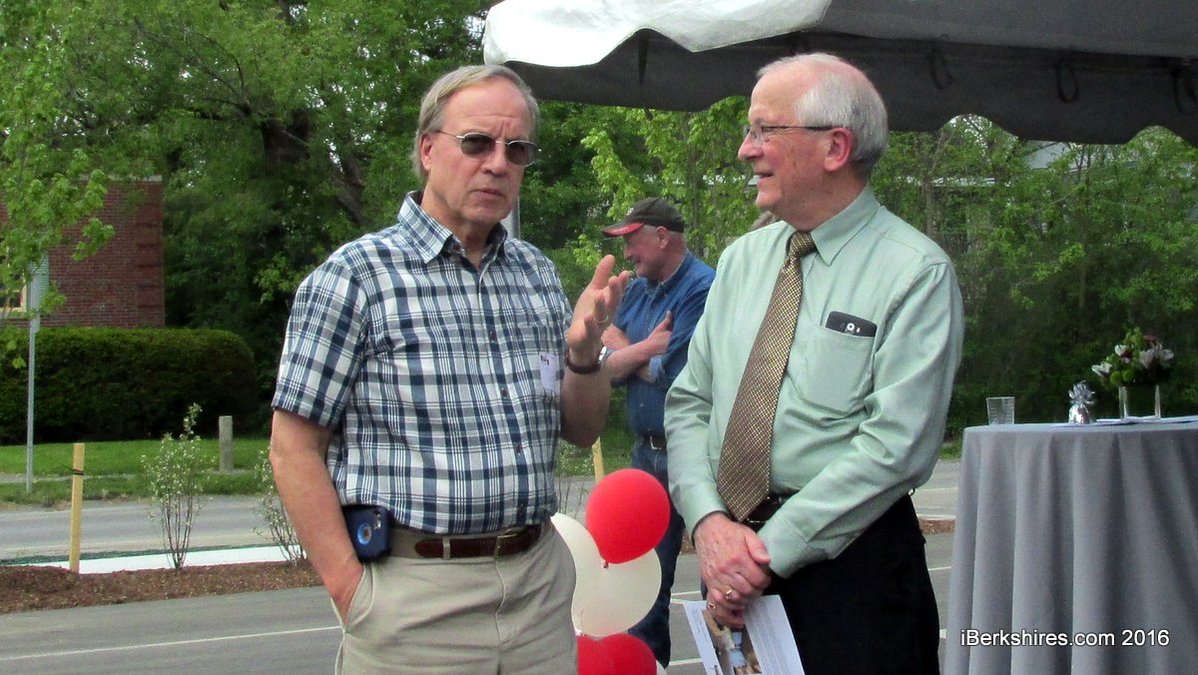
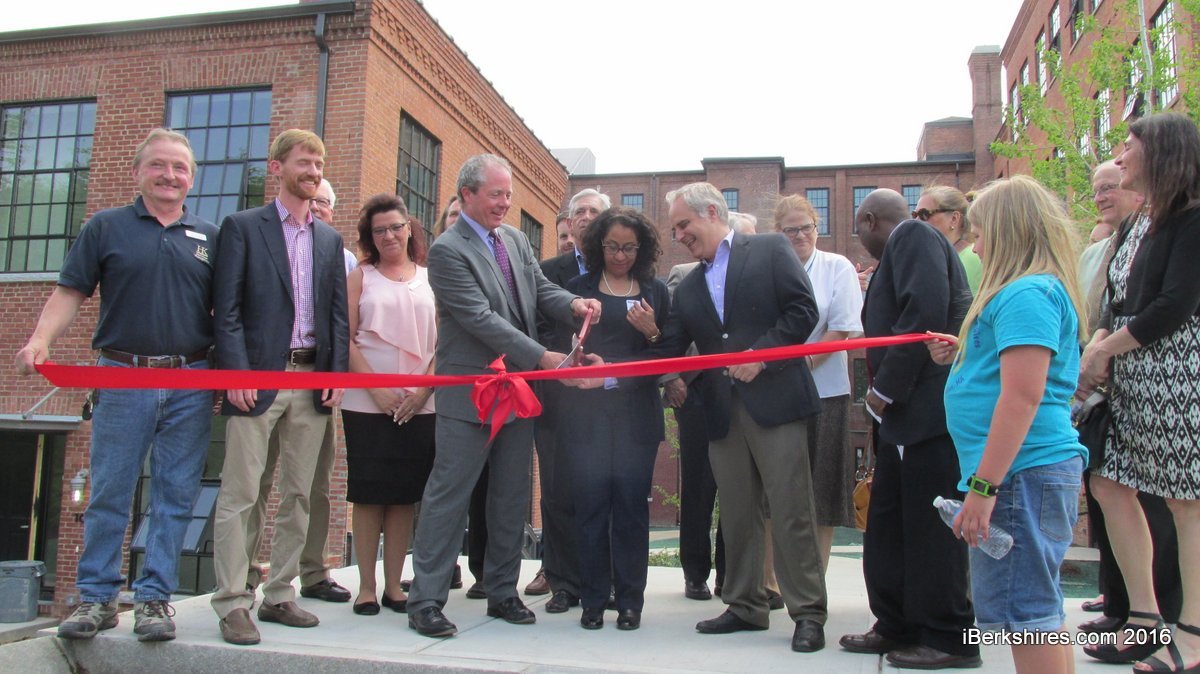
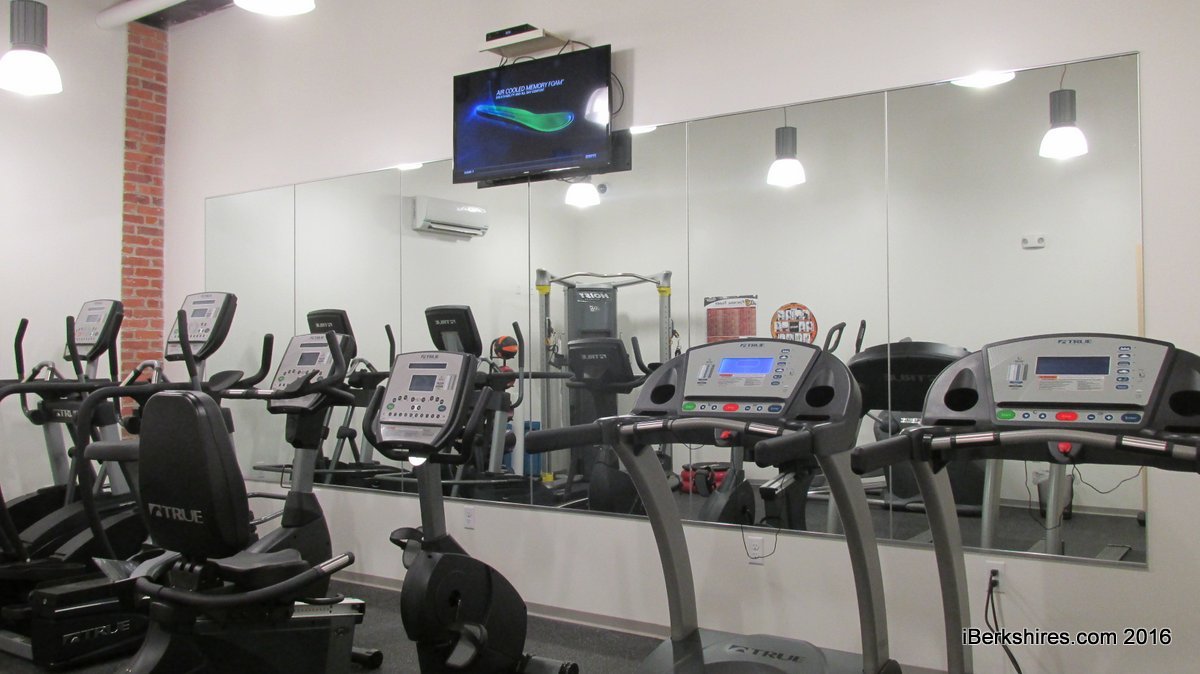
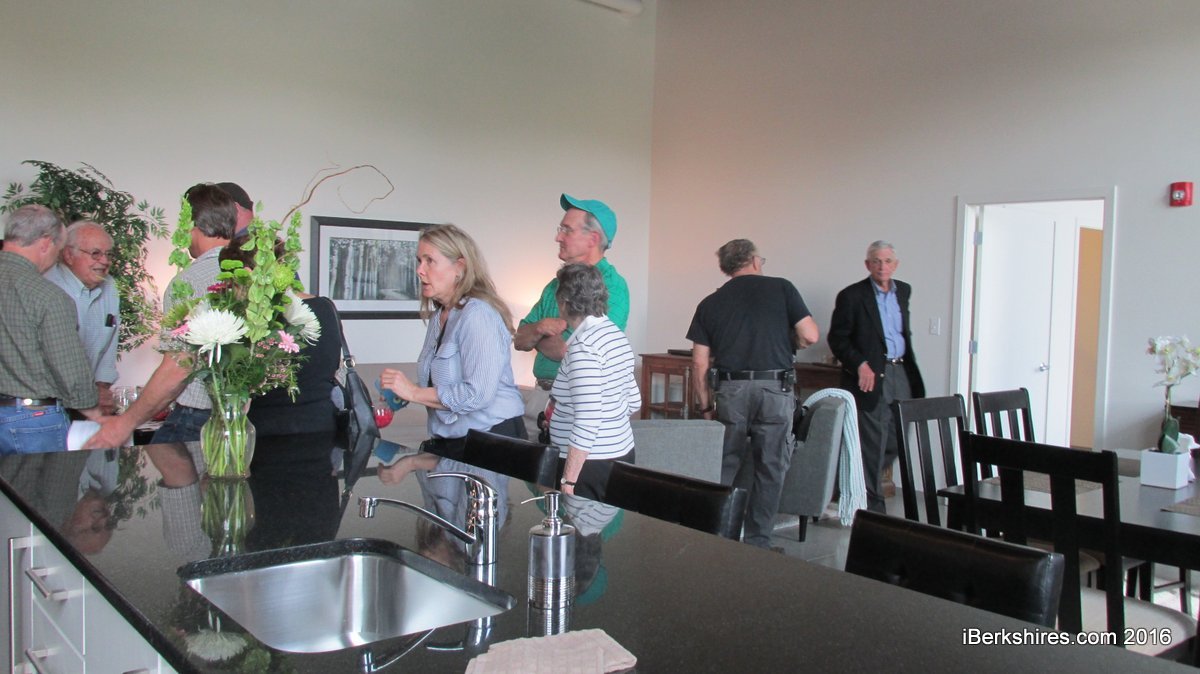
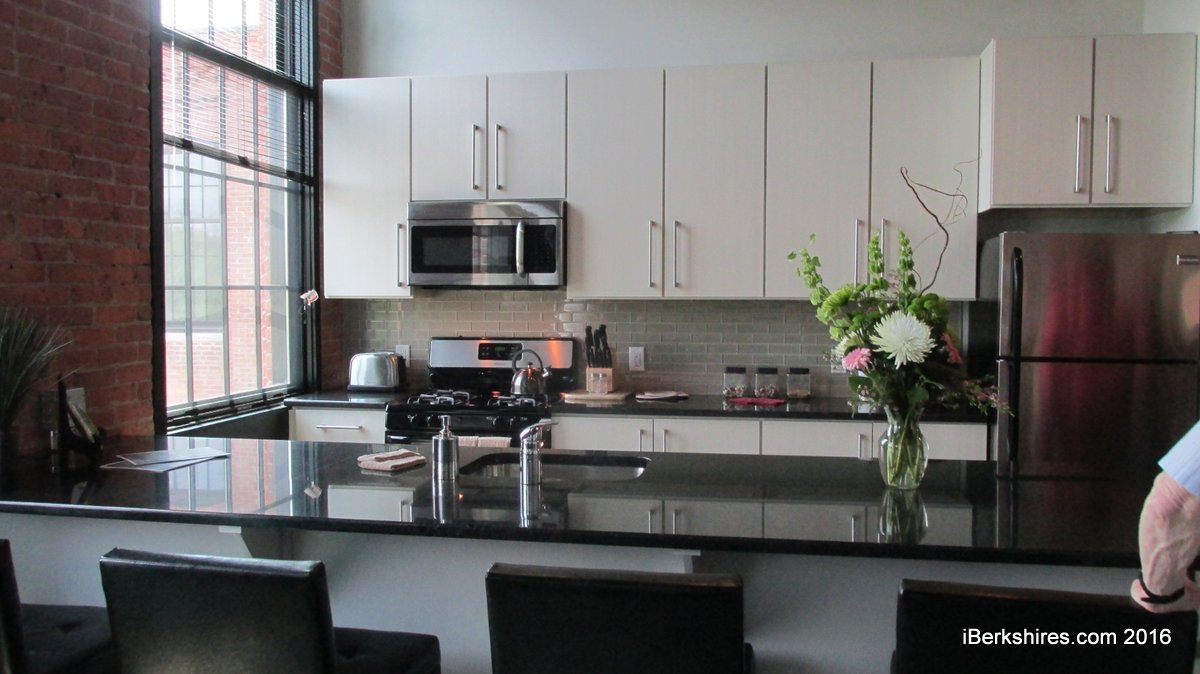
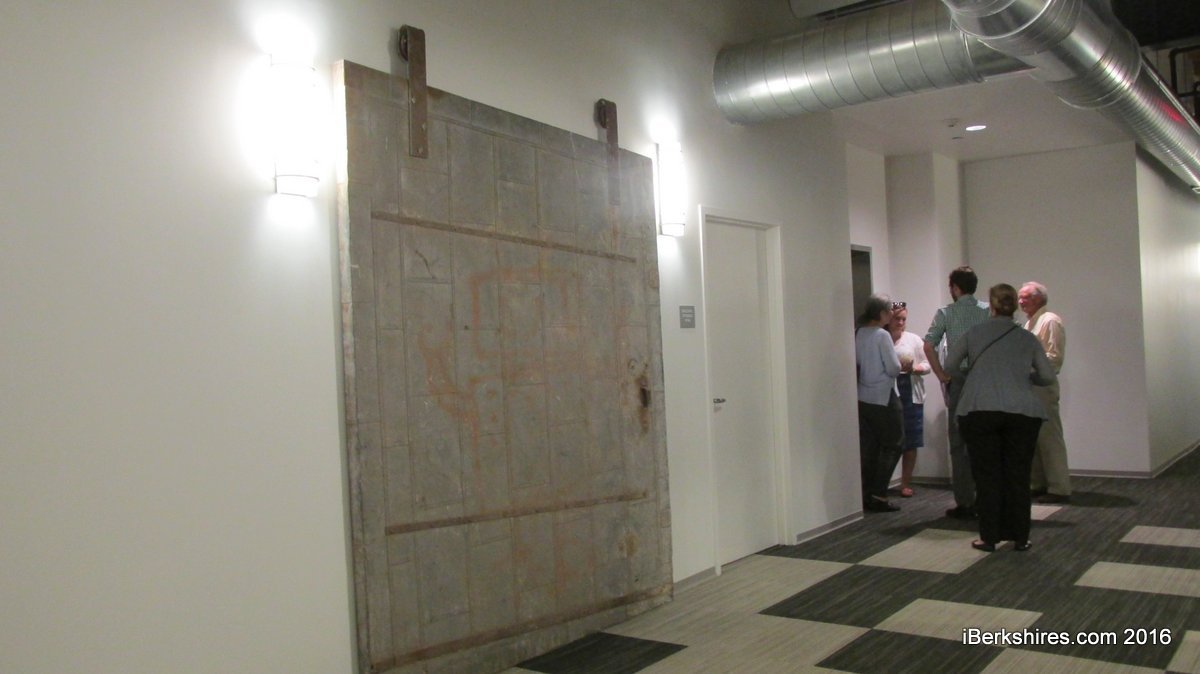
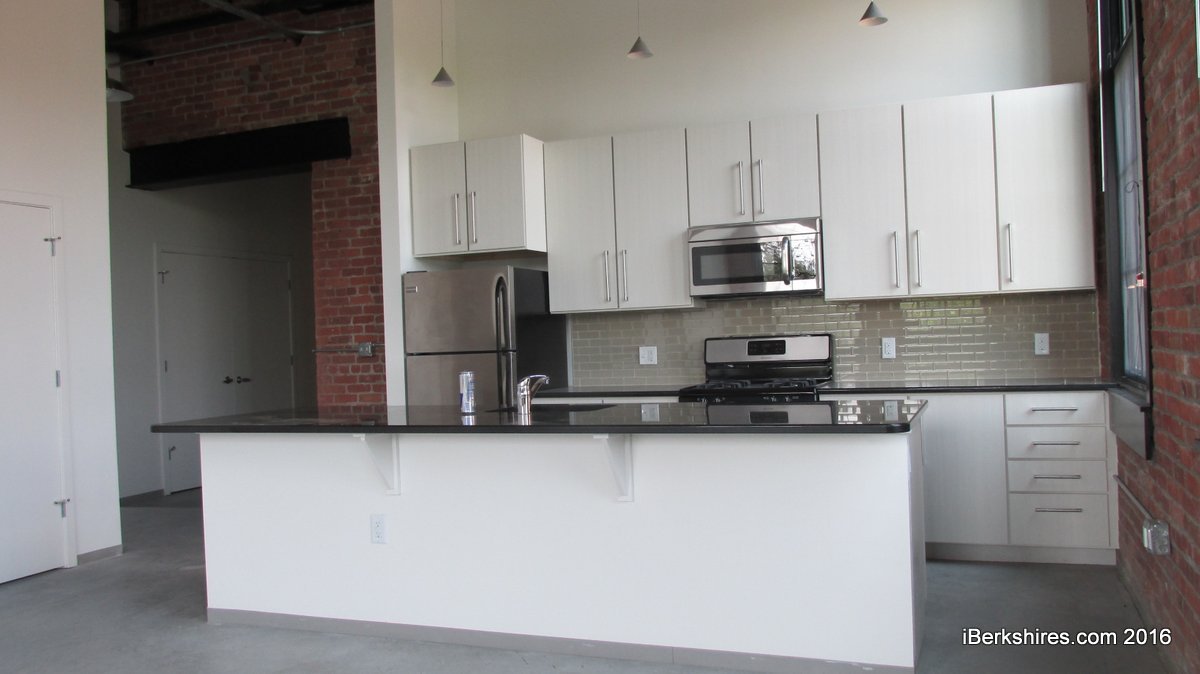
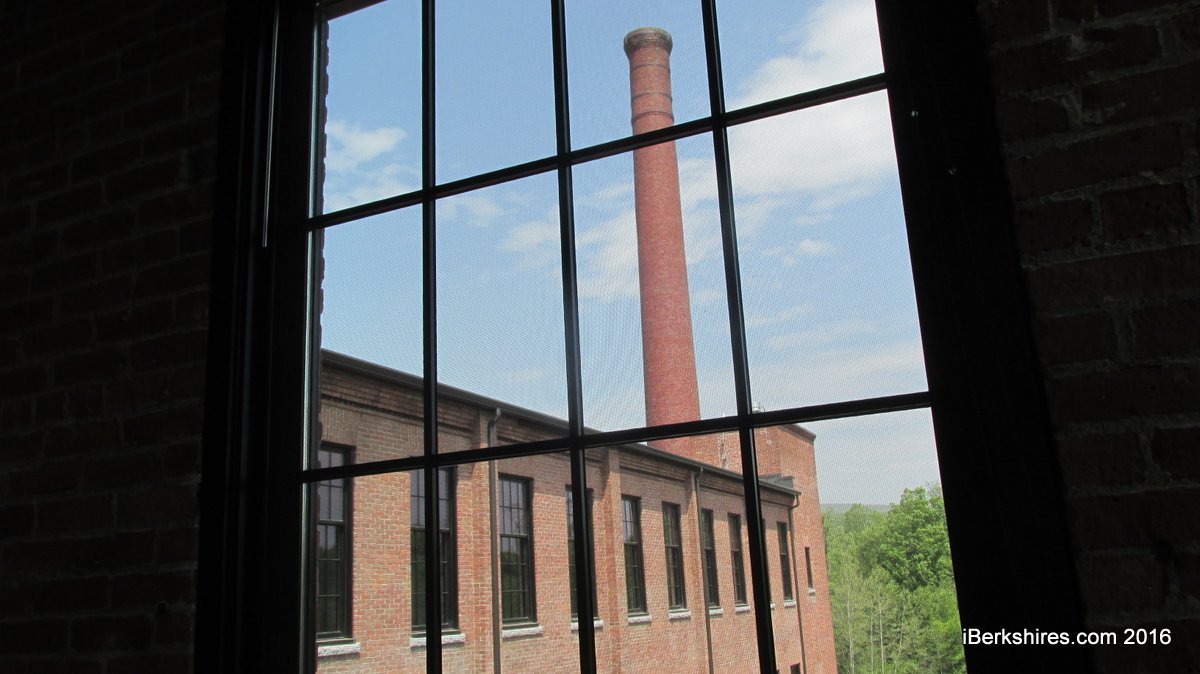
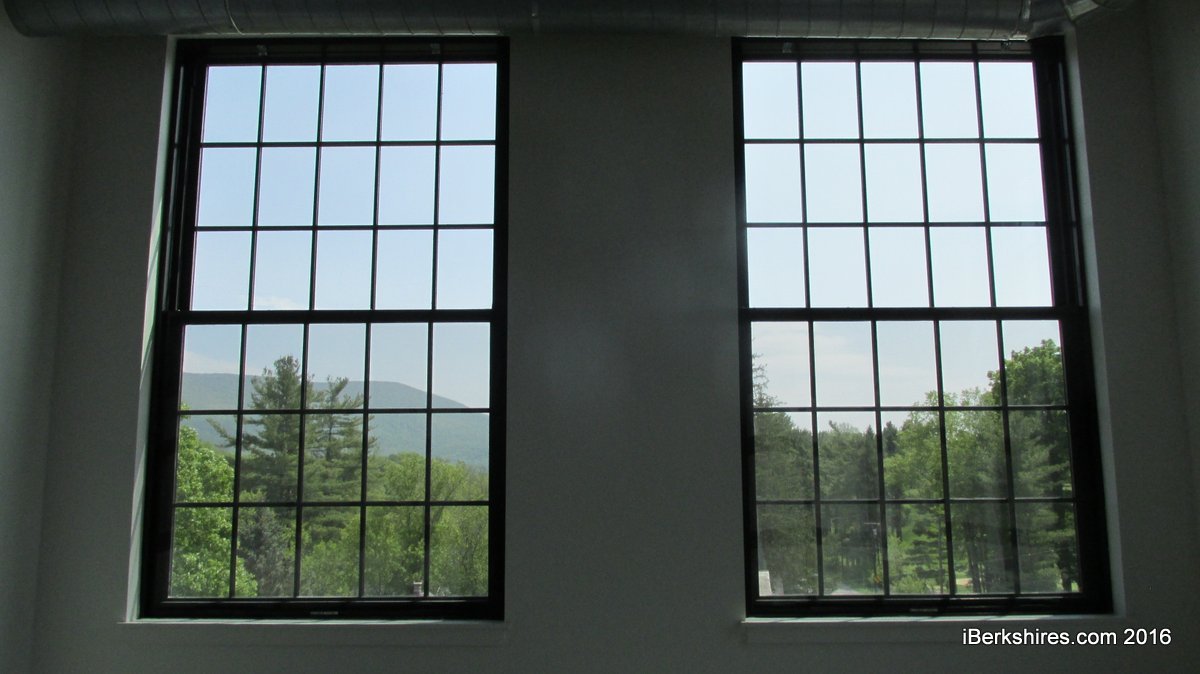
Patience Pays Off as Ribbon is Cut at Williamstown's Cable Mills
WILLIAMSTOWN, Mass. — It took 14 years to turn a decrepit hulk of a mill into 61 luxury housing units.
The project was halted by, among other things, the economic crisis of 2008 and sometimes seemed like a victim of bad luck.
But it was a stroke of good luck that sparked the Cable Mills project.
"We invited Bob Keuhn here in 2002 in hopes we could accomplish at [the Photech mill] what's been accomplished here," former Town Manager Peter Fohlin recalled at Wednesday's Cable Mills ribbon cutting ceremony.
"It did not take him very long to realize that no housing could be built at that property."
But after passing on the town-owned former mill on Cole Avenue, Kuehn stopped for a bite to eat on Water Street. Upon leaving the restaurant, he discovered the aging industrial site owned, most recently, by Carol Cable.
"He said, 'What about this building?' " Fohlin told the audience gathered under a tent in the apartments' north parking lot.
Kuehn ended up buying the Water Street property, and the rest is history — a tortuous history that required the fortitude of three separate developers and the forbearance of a variety of funders.
Fohlin, who was able to see the project enter brick and mortar development before his retirement last year, said the project has three "fathers": Kuehn, Bart Mitchell and Mitchell's former lieutenant, Dave Traggorth.
Keuhn, Fohlin said with a cracked voice, died at his desk in Cambridge while working on the Cable Mills project.
"Bob Kuehn was a hero in development and affordable housing across the state," Fohlin said. "And now they extend into Western Massachusetts."
Kuehn's estate put Cable Mills on the market, and Fohlin said 25 different developers kicked the tires before one, Mitchell, saw the property's true potential. As the principal of Mitchell Properties, he bought the mill and continued to make plans for the site. Mitchell secured a promise from the town to commit $1.5 million in Community Preservation Act funds to the effort.
"When we published a guidebook on how to use the Community Preservation Act, there is a depiction of Cable Mills on the cover, and the book is dedicated to Bob Kuehn," said Susan Connelly of the Boston-based Massachusetts Housing Partnership.
The town contribution was given in return for three benefits: 13 income-sensitive units, the preservation of an 1873 mill building and a pedestrian walkway allowing access to the Green River, which runs along the east side of the property.
"One of the funny things about this town is there is not much access to the Green River and not much access to the Hoosic River," Mitchell said. "That's why these mills wanted to come here. To keep that alive was the point."
Traggorth, who took the lead on the project in recent years said Wednesday it is gratifying to see how Cable Mills already is bringing vitality to the riverfront and the rest of Williamstown's downtown.
"To have people living here and enjoying it as we always envisioned is really fun to watch," he said. "I've just been here the past two days watching people from the general public come down and use the riverwalk, as we always talked about. I've seen residents come in and go out and walk down to Spring Street.
"It's really a rewarding thing see."
Current Town Manager Jason Hoch said he also appreciates the apartment complex's impact on the Water Street neighborhood.
"And on a personal note, this is a beautiful place," Hoch said. "I love living here."
In addition to the current and former town managers and developers Traggorth and Mitchell, Wednesday's ceremony featured remarks from several of Cable Mills' funding sources: Property and Casualty Initiative, the National Trust Community Investment Corp., Boston Community Capital and Mass Housing Partnership.
"This project helped us define what 'patient capital' is and why it's so important," said Michelle Volpe, president of Boston Community Capital's Boston Community Loan Fund.
"Bob Kuehn's estate chose wisely when they sold the property to the intrepid developer Bart Mitchell. … These projects are never easy. Fortunately, most are not as hard as this one. But it was worth every penny."
Once construction started on the project in the late fall of 2014, the progress was slowed by factors ranging from the bitterly cold winter of 2014-15 to the discovery of unknown foundations that needed to be dealt with on the property, Traggorth said.
But considering how long it took to get from Kuehn's purchase to this spring's occupancy, those delays were minor.
"We've learned how to be patient," Traggorth said. "A couple of months here or there don't matter. The most important thing was getting it right. That's what we were focused on."
Tags: Cable Mills, historic preservation, housing development, mill reuse, ribbon cutting,

